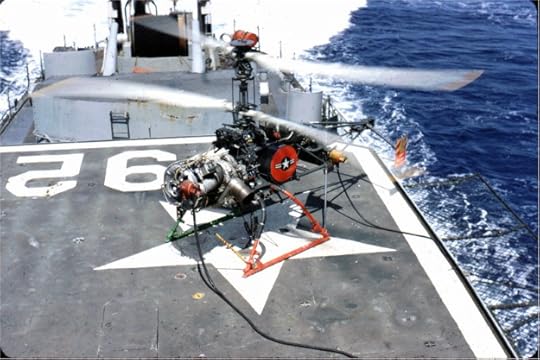Armed drones are far older than Tom thinks: A short history of the UAV 4 U

What if they gave a
war and nobody came? We are learning the answer to that old question, and
it ain't what the flower children thought.
In other UAV news, I see where an F-18 made a UAV-like
landing on the USS Eisenhower.
There was a pilot in the plane but he kept his hands off the controls. Look ma!
By Joseph Trevithick
Best Defense department of robotic military history
The arming of drones
really hits at a number of disparate issues. The U.S. Navy had actually fielded
a rotary wing anti-submarine warfare drone
in the 1960s that could attack targets with torpedoes. Under the direction of
the Advanced Research Projects Agency (ARPA; what is now the Defense Advanced
Research Projects Agency or DARPA) a small number of these drones were fitted
with machine guns, automatic grenade launchers, rockets, and other weapons, and
used experimentally during the conflict in Vietnam. The results of these tests
were generally favorable, but went nowhere. The Navy ceased operating the Drone
Anti-Submarine Helicopter (DASH), designated the QH-50, in 1970. Japan also
used the QH-50 in the anti-submarine warfare role. [[BREAK]]
The first USAF experiments with armed drones were conducted in the 1970s and
the results were extremely positive. The U.S. Air Force as an institution,
however, has been and still is very reluctant to explore the full potential of
armed drones. What they have done recently is more in response to the use of armed
drones by the intelligence community, by the U.S. Army, and by the U.S. Navy,
and prodding from civilian leadership.
For the USAF, the issue of unmanned drones as a replacement for combat aircraft
hits hard at the arguments that led to them becoming a separate service in the
first place. The USAF has a serious fear that unmanned aerial vehicles will
lead to an "Air Force" led by individuals who have never flown
anything. Uniformed USAF leadership is almost entirely comprised of pilots. As
the top USAF brass sees it, the USAF flies things, and it doesn't fly them from
mil-vans in Nevada. The U.S. Army has
less of a problem with this as its top leadership has generally not come from
the aviation branch. The U.S. Navy and U.S.
Marine Corps are similarly more accepting of UAVs.
The success the U.S. Army is having in
deploying their own organic armed drone units might well prove the deciding
factor in really pushing the USAF to make greater use of such things. The USAF
has generally responded vigorously to defend its turf from anything it sees as
an attempt by the U.S. Army trying to claim its roles and missions. This has,
since the 1960s, caused the USAF to make 180 degree policy turns on numerous
systems and capabilities that it has previously expressed either no interest or
negative interest in.
I agree though, that drone strikes in general rarely make the front page. Unlike
the cruise missile strikes or large air operations of old, they've so
frequently employed as to become not newsworthy. Perhaps this is the real
change drones are having. With their ability to provide a more persistent
coverage of a target and be more consistently used without the need for a large
build-up, it's easier to sweep them under the rug so to speak.
Joseph Trevithick , a
research associate at GlobalSecurity.org, holds a master's degree from the
Georgetown University in conflict resolution.
Thomas E. Ricks's Blog
- Thomas E. Ricks's profile
- 436 followers



